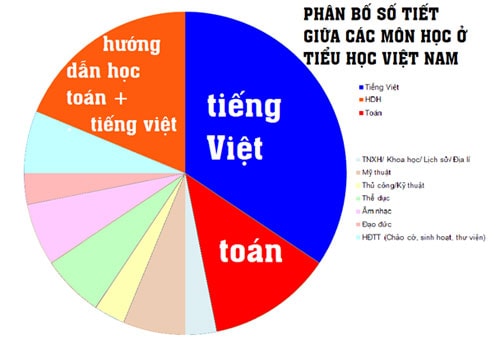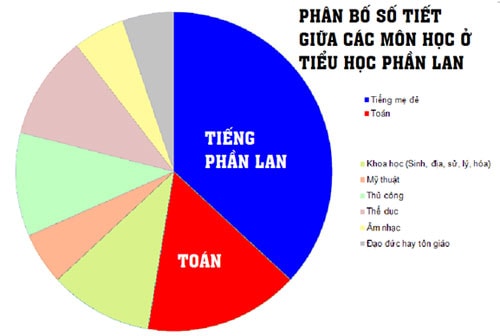Students have to learn too much Math and Vietnamese.
The total time spent on studying Math and Vietnamese by primary school students is up to nearly 62% of the total time spent on all subjects today. But in reality, Vietnamese students are still very bad at Literature?
Dr. Vu Thu Huong, lecturer at the Faculty of Primary Education, Hanoi National University of Education, continues to give comments on the draft Comprehensive General Education Program.
 |
Dr. Vu Thu Huong, lecturer at the Faculty of Primary Education, Hanoi National University of Education. Photo: NVCC. |
Looking at the table of dividing the number of lessons between subjects in primary school according to the draft of the General Education Program, I have many concerns. The time for Math and Vietnamese is too much.
All 5 primary school grades devote the most hours to the above two subjects. In grade 1, Vietnamese has 420 hours a year, in grade 2 it is 350 hours, in grade 3 it is 280. Meanwhile, subjects about physical training, lifestyle, and life around us only have 70 hours. Why do children, who need to be focused on education to form and develop harmoniously both physically and mentally, have to learn so much about Vietnamese?
In the current primary school curriculum, in addition to the time spent teaching the main content of Vietnamese and Math, the instruction hours are actually just for doing exercises of these two subjects. The total time spent on learning Math and Vietnamese by primary school students is up to nearly 62% of the total time of all current subjects. But in reality, Vietnamese students are still very bad at Literature?
The assessment of students' learning is also biased towards the learning outcomes of Math and Vietnamese. At the junior high and high school levels, these two subjects are considered as criteria for evaluating excellent, advanced, and average students. Other subjects are only calculated by the total score. At the primary level, Math and Vietnamese have a much higher position. These are the only two subjects that have final and yearly tests/exams to assess the quality of students' learning. Other subjects do not have tests, teachers only need to evaluate qualitatively.
The skewed distribution and evaluation of subjects has led to extra classes and biased learning that has lasted for many years. The curriculum in school is not heavy, but because they want high scores, parents still tirelessly send their children to advanced classes in Math, Vietnamese, and Foreign Languages. This has made children tired.
The focus on Math, Vietnamese, and Foreign Languages, while other subjects are considered secondary, also prevents children from studying other subjects seriously.
 |
Table of distribution of number of periods between subjects in current Vietnamese primary school program. |
We still know that Vietnamese education is heavy on knowledge and low on practice. One of the obvious reasons is that we have turned practical subjects into secondary subjects by this biased assessment. Vietnamese students graduate from university but have very poor knowledge of History, Geography, Biology, etc. The consequences are very obvious, shown in the fact that our speculations and actions are often very emotional and unscientific.
When subjects are not evaluated fairly, the phenomenon of main subjects and secondary subjects will certainly appear and become entrenched in the minds of students, teachers and parents. From there, lopsided learning will appear and leave many consequences.
Music, Fine Arts, Physical Education, History, Geography, Biology… are the subjects that create human knowledge and culture. Disregarding these subjects is the cause of ignorance and lack of culture.
 |
Table of distribution of number of periods between subjects in Finnish primary school program. |
In Finnish primary schools, the ratio of Math and mother tongue hours is only 52%, especially the number of study hours of Finnish children is 300 minutes/week less than Vietnamese children. In Japanese education, besides prioritizing the largest amount of time for Japanese (360 periods/year), Physical Education and Life Sciences have the second largest amount of time (135 periods/year), equivalent to Mathematics.
I think it is time to restore the importance of subjects that have been implicitly considered secondary. Only then can the problems that Vietnamese education faces, such as lack of practicality, bias, and lack of appeal, be solved.
According to VNE


